
 Some producers do all they can to court film critics, under the impression that one positive review in the right journal can herald financial success for their movie. While other producers scoff at the notion of the all-powerful film critic, believing instead that reviews hold no sway in the actions of movie-goers.
Some producers do all they can to court film critics, under the impression that one positive review in the right journal can herald financial success for their movie. While other producers scoff at the notion of the all-powerful film critic, believing instead that reviews hold no sway in the actions of movie-goers.
Bruce Nash from The Numbers and I investigated this very topic, by studying the correlation between the reviews a movie receives and its chance of reaching profitability. Or to put it in the language of the ruthless investor or producer: “Does it actually matter if critics think my movie is any good?”
We looked at 3,715 feature films released in US cinemas 2000-15 for which we have production budget information (a complete list can be found here). By using an algorithmic model we’ve developed from real-world data, we’re able to estimate the chance that each of our 3,715 films reaching profitability. This takes into account all income streams (from theatrical right through to syndication) and all costs (such as the budget, marketing and distribution costs). We then studied the correlation between profitability and the views of film critics, as measured by a movie’s Metascore).
Rates of profitability
Across all our films, we estimate that 41% made a profit and 59% made a loss. (At the end of the article there a few notes on this finding).
The genres most likely to turn a profit were animation, horror and adventure, with crime, drama and biographies faring the worst.
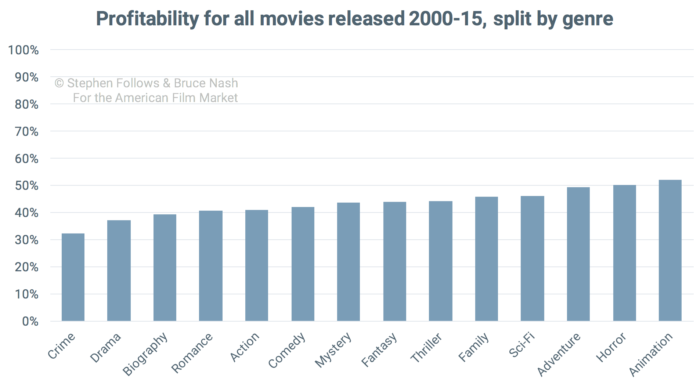
FILM LUCY SUBSCRIBE TO THE CHANNEL AND THANK YOU FOR YOUR SUPPORT SIMPLE DONATIONS ARE WELCOME ACCEPTED WILLINGLY ...
WE RECOMMEND THE VIDEO: Full Movie In English LUCY (ACTION,FANTASY)
A huge number of factors will affect whether a film makes money or not, but our question today is: Is critical success one of them?
Overall, does the critical responce matter?
Let’s start with the headline finding: in almost all situations, the better a film is, the higher chance it will reach profitability.
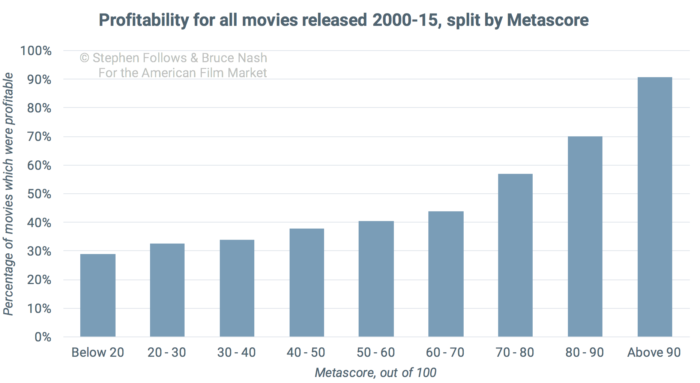
Of the films with the lowest critic scores (i.e. Metascore under 20 out of 100) only 29% made a profit. By contrast, films in the highest categories (i.e. those scoring over 90) turned a profit 91% of the time.
The increased chance of profitability is not uniform. If your film is languishing with a Metascore in the 30s then improving the film to a Metascore in the 50s will only increase your chance of generating a profit by 19%. However, if your film is already scoring in the 70s, then increasing it to the 90s increases your chance of making money by 59%. Those last details that turn a good movie into a great movie really make a difference.
For filmmakers, this will be a relief to hear, however in order for it to be commercially useful, we need to break it down into a little more detail.
The genres where critics matter most
For the vast majority of genres, the better the film is (as defined by critics) the greater chance it has of becoming profitable. The genres where critics’ ratings and profit most closely match are (in order) adventure, action and fantasy.
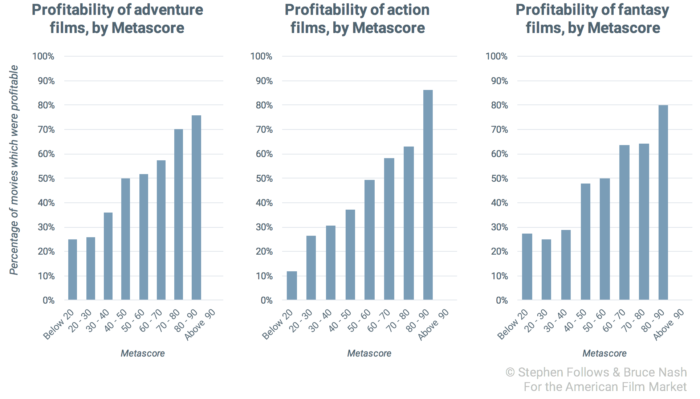
The genres where it’s a bit complicated
On the other end of the spectrum, we find genres where their profitability rates are less correlated to the Metascore:
- Drama – A rising Metascore has little effect on the chance that a drama will break even, until it starts to reach the high end of ratings (i.e. 70+). But after that point, each extra Metascore point increases the chance of profit significantly. In other words, get good or go home!
- Comedy – It’s a similar story within comedy, with an even starker rise when a film crosses over 70 on the Metascore scale.
- Animation – Animated films are the second least correlated genre (we’ll see the worst shortly). They tend to have relatively high rates of profitability, even when critics are panning them. A good case in point are The Smurfs and The Smurfs 2 which scored poorly with critics (30 and 34 respectively) and yet were both profitable.
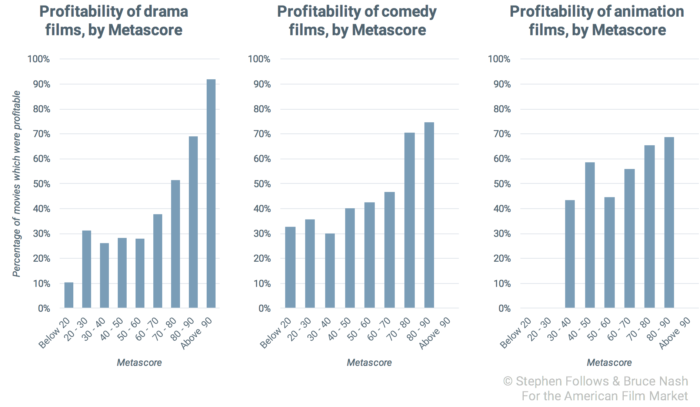
And the genre that’s downright bonkers
We are yet to mention the genre which has the lowest connection between critical responce and profit.
In the chart below, you can see the correlation between Metascore and profitability for each genre, where zero means absolutely no correlation and one means complete synchronisation.
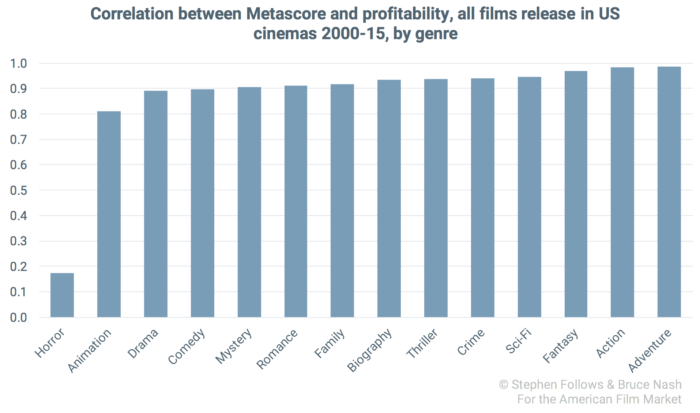
As horror films receive better reviews, they do little to improve their chances of making money. In fact, the most profitable horror films score between 30 and 50 on the Metascore scale, equivalent to between two and two and a half stars out of five.
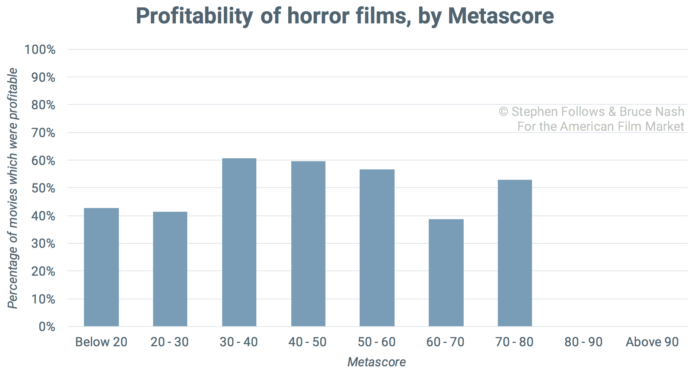
Notes
In breaking the figures down by genre, we excluded any category which had fewer than ten movies (i.e. animations with a Metascore below 20, for which there are only three movies).
Across all our films, we estimated that 41% made a profit and 59% made a loss. These percentages reflect the fact that production budget information is generally made available for studio films and bigger independent productions, and less frequently for small indie films and particularly for films that failed to find distribution, or performed poorly. So the overall percentage of films making a profit in our dataset is higher than the industry average as a whole. In the analysis above, we’re interested in the relative performance of films, not the absolute percentages; so don’t get too hung up on the specific percentage that we see. We’re mostly interested in how the percentages compare—i.e. does a better film have a better chance of making money.
This is an article I originally wrote for the American Film Market, with Bruce Nash from The Numbers.